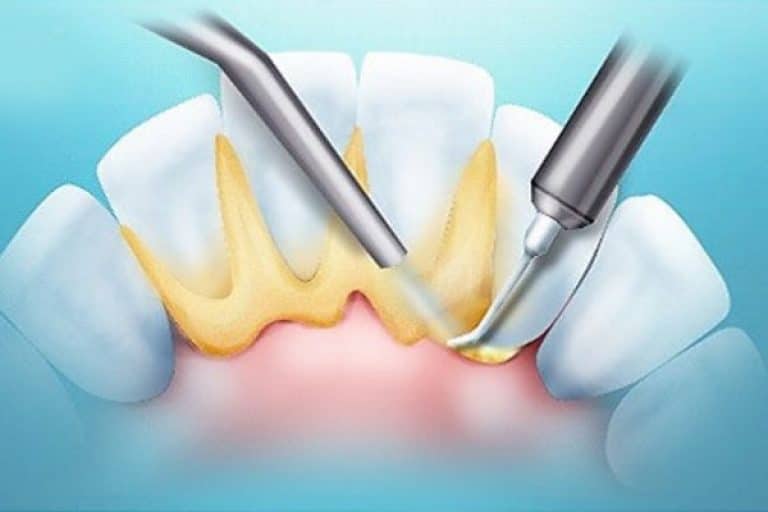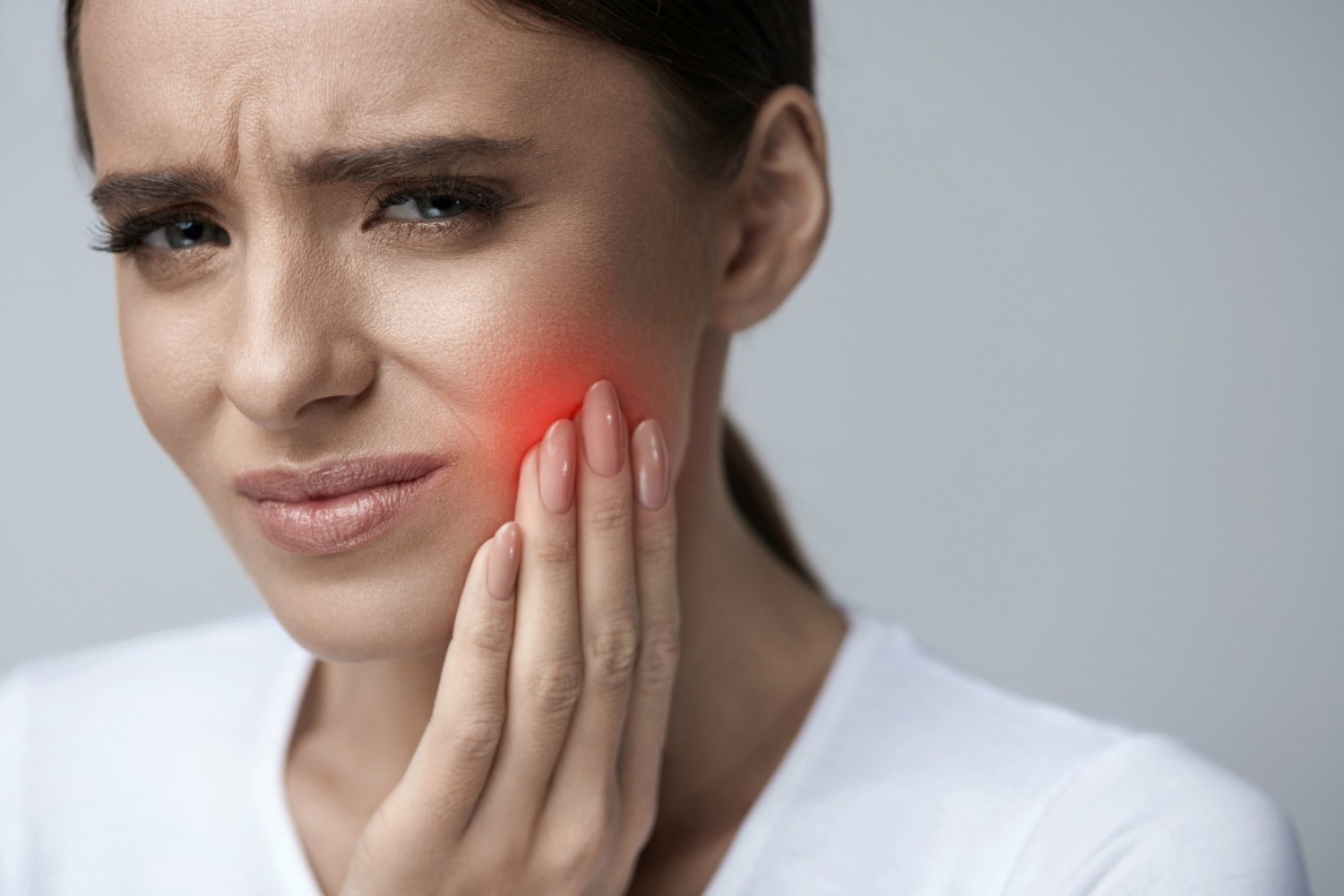Most of us rarely visit the dentist, believing that tartar is an aesthetic problem that can be easily eliminated with routine dental cleanings. Alas, it is impossible to remove hardened plaque on your own without a specialist. A person rarely spends much time on oral hygiene, and as a result, the formed plaque turns into tartar, which is impossible to get rid of without professional help.
If you do not know how to remove tartar, carefully read this article, or better yet, make an appointment with a dentist for the nearest date.
IMPROPER HYGIENE IS TO BLAME
Hard plaque is a special mineralized film that consists of many microbes. Poor daily brushing leads to their reproduction and promotes the growth of a soft, invisible film on the teeth. It, under the influence of microflora, begins to mineralize actively for fifteen hours.
The completion of mineralization occurs after 7 days, and after 6 months, full-fledged stones appear on the bone formations. The outer protective shell of the crown part of the tooth, which is covered with plaque, begins to darken, but this is not the only negative aspect: hardened plaque (dental deposits) is the main infectious center and becomes the basis for the emergence of a number of diseases that cause many troubles up to the loss of the tooth.
Thus, cleaning hardened plaque is not only a hygienic aspect. This procedure can be called tooth-preserving, and a competent dental treatment can rarely be done without it. Before: replacing a lost or irreversibly damaged tooth with an artificial implant; installing orthodontic brackets; whitening or other procedures, the specialist carefully removes stones so that the procedure will lead to a positive result.
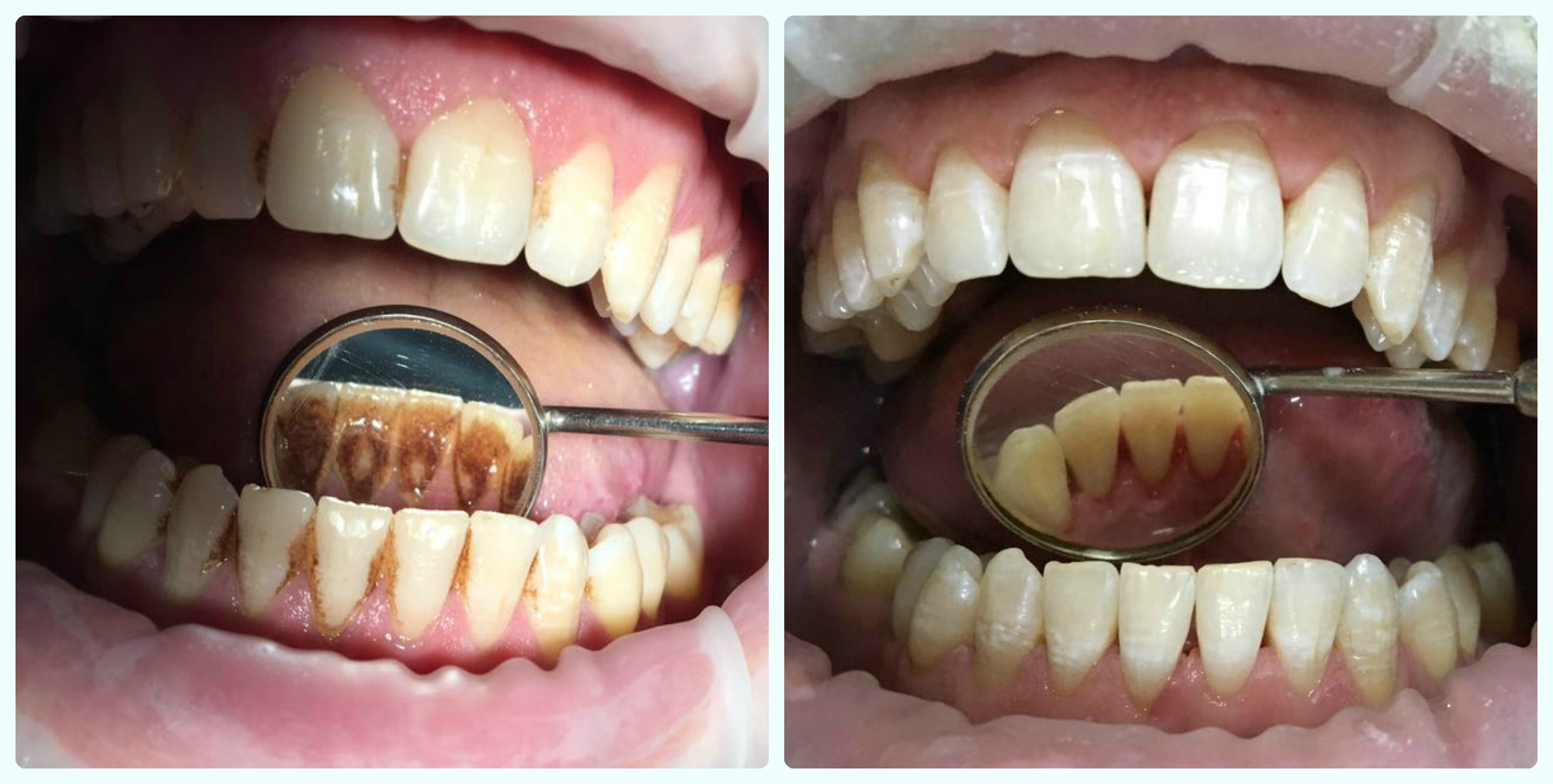
WHAT ARE THE FORMATIONS LIKE?
Can tartar be removed? It all depends on its type. The composition of hardened plaque includes organic and inorganic components. About thirty percent of the components are organic: microorganisms, protein, and ost., and inorganic components include calcium salt.
Hard plaque is classified by the place of its accumulation. Stones are divided into:
- Above the gums. They can be noticed during smiling, the shade of such plaque is dark or yellow. They are removed quickly.
- Under the gums. They are formed under the gum so it is difficult to see them with an unarmed eye. The tooth looks perfectly healthy.
As a rule, such formations can be seen if you look at the gum – hard plaque makes them bluish, swelling and bleeding appear. A stone in the space between the gum and the tooth root can cause minor local pus.
Noticeable hardening signals a lack of hygiene, and sub-gingival formations are associated with a violation of the connection between the bone formation and the gum, which destroys all tissues. Formations under the gum can only be detected by a dentist using special instruments. To find them and remove them is not an easy task that not every specialist can cope with.
If you are interested in how much it costs to remove tartar, the price depends on its type and the complexity of the procedure. The minimum price is 70-75 dollars.
WHY DOES IT APPEAR?
The main cause of any problem is insufficient hygiene. If you regularly poorly cleaned the oral cavity, did it with the wrong brush or used poor-quality paste, then wait for the formation of not only hardened plaque, but also the destruction of the hard tissue of the tooth, and other, no less dangerous diseases. To avoid unfavorable consequences choose the right brush and paste, also follow the correct technique of cleaning teeth and be sure to rinse your mouth after eating and use floss.
Accelerated appearance of hardened plaque becomes the cause:
- Fascination with confectionery, carbonated drinks, foods rich in simple carbohydrates;
- Frequent consumption of soft or liquid foods, food fillers and flavor sweeteners;
- Incomplete diets;
- Intake of alcoholic beverages and smoking;
- Heavy saliva production;
- Taking a number of pharmacological drugs;
- Inflammatory diseases of a chronic nature.
WHAT IS TARTAR?
The process of tartar begins with the formation of a small plaque, then mineral salts accumulate on it, forming crystallization axes, and eventually, the increase in crystals contributes to the deposition of plaque, which, over time, becomes like a stone.
The hardened plaque consists of 90% of dangerous microbes, the multiplication of which can cause:
- Gradual breakdown of tooth hard tissue.
- Unpleasant odor.
- Disease of the oral mucosa.
- Aggravation of a number of chronic diseases of the oral cavity.
- Inflammation of the mucous membrane of the gums.
- Spread of the inflammatory process to other tissues of the jaw or gums. If cleaning is not carried out immediately after the deposit has accumulated under the gums, microbes can affect the roots, leading to bone loss.
Important. By remembering this combination of words “tartar removal dentistry“, you will never have dental problems.
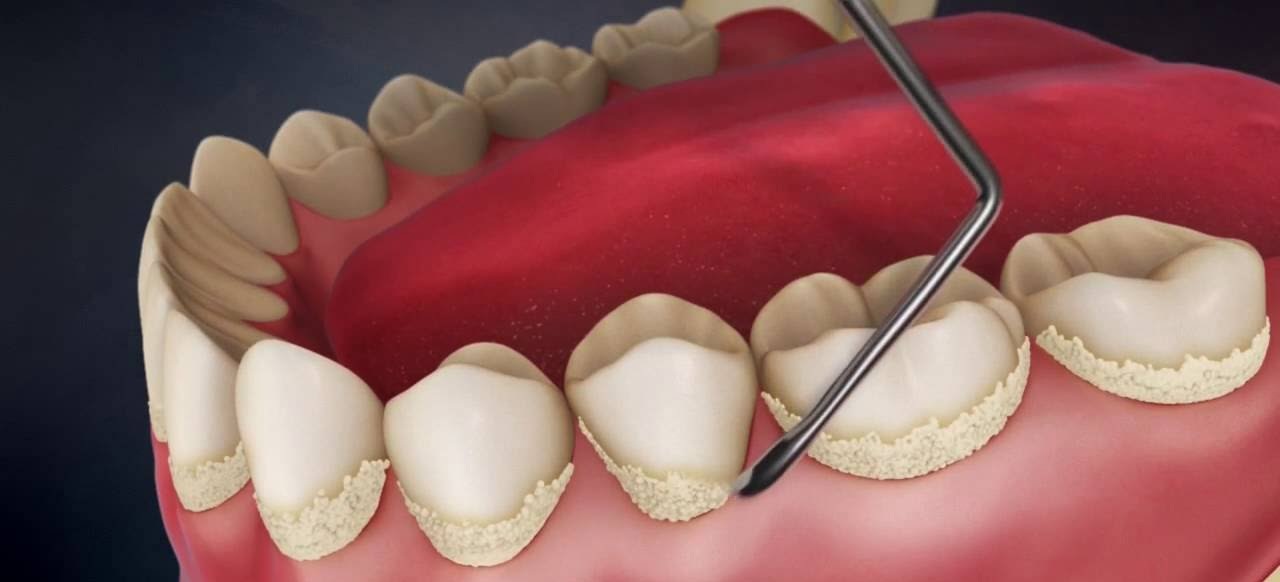
TARTAR REMOVAL
Is it necessary to remove tartar? The answer is yes!
Minor daily plaque can be removed by natural hygiene without problems. Other dental deposits can only be removed by a dentist using special pharmacological means. Since the last stage of hardening occurs in 6 months, it is necessary to make an appointment with the doctor twice every 12 months to monitor the condition of your teeth and gums and remove tartar if necessary, protecting your teeth and gums from an intractable problem.
Remove tartar in the clinic
There are a number of professional techniques for cleaning hard deposits – based on their choice: the scope of work and the capabilities of the dental clinic.
METHODS OF TARTAR REMOVAL
CLASSIC REMOVAL
Many years ago, plaque deposits were cleaned with hand tools. For this purpose, hooks and hammers were used: the hardenings were broken off piece by piece from the bone formations and then cleaned. This technique was very uncomfortable for the patient and was accompanied by sensitive outer tooth protection and soft tissue damage. In recent years, safe and effective ways of dealing with plaque have been researched, so today mechanical cleaning is considered a relic of the past.
ULTRASONIC TARTAR REMOVAL

The most popular in the fight against hardened plaque today has become ultrasound. Its use is maximally effective, does not harm the enamel and cleans the entire oral cavity.
- The procedure is carried out by a special device scaler. At the tip of the device has a special metal hook, the tip of which performs rapid chaotic movements in the necessary ultrasonic range.
- Formations that come in contact with the moving nozzle, begin to break down, and the jet of water that in parallel succumbs to the oral cavity, cleans the teeth.
- The liquid that is fed to the tip of the hook cools the enamel and the device itself during operation.
- The aqueous ultrasonic frequencies promote the formation of minimal bubbles that, release energy that destroys hard buildup.
The entire procedure takes no more than 60 minutes and has a positive effect on the outer protective shell of the crown part of the tooth.
LASER TECHNIQUE
The tooth surface is cleaned without contact. The action of the device concerns only dental deposits – neither the outer nor the inner protective crown part of the tooth is affected. The principle of operation of the device is that it acts on liquid substances. The laser with its beam destroys the tartar, and the jet of air and water coming in here, washes out even the smallest particles of hard deposits.
This method stands out for its effectiveness and safety, but it is not so popular, because of the inflated price.
Does it hurt to remove tartar? Absolutely not, modern treatment methods allow the procedure and make it absolutely painless.
REMOVING TARTAR FROM TEETH – ADDITIONAL METHODS
To clean the teeth from hard deposits, in addition to the technique described above, air-abrasive particles are used. Under high pressure, water with abrasive particles is applied to the surface of the tooth, removing plaque. This technique is effective after ultrasonic or laser cleaning, because independently clean the enamel from hard dental deposits is not able to.
TARTAR-REMOVING TOOTHPASTE
A special paste is applied to the teeth, which is able to soften hard formations, but not remove it. The effectiveness of toothpaste is questionable. Yes, it will undoubtedly clean the teeth and make them strong, prevent all sorts of destruction, but it will not be able to clean them from stones. Therefore, the question of where to remove tartar, you should not arise – only at the dentist.
When is it necessary to clean the teeth from hard formations?
It is necessary to check with the doctor for the presence of stones on the teeth twice a year. Those who have problems with daily oral cleansing, smoking, poor diet, or GI issues should be checked by a dentist once a quarter.
Before removing hardened plaque, the dentist determines if there are any contraindications to the procedure, as well as eliminating tooth and gum disease.
Ultrasonic therapy is not compatible with:
- Dental implant;
- Orthodontic appliances;
- A malfunction in the sequential contractions of the heart muscle;
- Chronic inflammatory disease of the respiratory tract;
- Inflammation of the lung mucosa;
- Colds;
- Infection resulting from exposure to Koch’s bacillus;
- Inflammatory liver disease;
- Increased sensitivity of tooth enamel;
- The first three months of pregnancy.
Laser should be abandoned if:
- You are under the age of eighteen;
- You are expecting a baby or breastfeeding;
- You wear braces;
- You own very sensitive enamel;
- You have many teeth with fillings in your mouth;
- You suffer from cardiovascular disease, viral or infectious ailments.
TARTAR REMOVAL AT HOME
Today in the network you can read various recipes, following which, sort of, you can clean your teeth from unwanted formations without the help of a specialist. In addition to the fact that they will not bring the desired effect, such methods can additionally traumatize the teeth and cause them additional damage. Using baking soda or mineralized salt are not considered the best folk remedies. Cleansing teeth from stones is the task of professionals in their field. The only thing you can do is to observe preventive measures and prevent the appearance of stones.
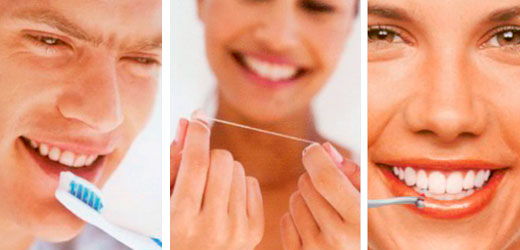
TARTAR PREVENTION
Prevent the transformation of soft plaque into hard plaque is not so difficult. To do this, you need to:
- Visit a certified dentist once a quarter.
- Purchase proper and quality hygiene products.
- It is best to ask your doctor to recommend a cleansing powder and brush, you can also look into other oral cleansing products if needed (herbal rinses, irrigators).
- Reduce the amount of unhealthy foods and drinks that are harmful to your teeth.
- Diversify the diet with fruits and vegetables.
- Give up cigarettes.
- Treat all dental diseases as soon as they are diagnosed.
- Monitor the state of health, take the necessary tests once a year.
If plaque is formed abnormally fast, it can signal a problem with the work of the gastrointestinal tract and metabolic processes in the body. In this case, going to the dentist will bring only a short-term effect, and the problem will not be solved until the source of the problem is eliminated.
TARTAR REMOVAL – THE COST OF THE PROCEDURE
The cost of cleaning teeth from hard plaque is significantly influenced by the price range of the dental clinic. Modern equipment and professionalism of a qualified doctor, but you pay for the safe conduct of the procedure with quality means. Also, the final cost depends on the severity of the work and its volume.
It happens that it is not possible to be limited to classical cleaning and it is necessary to treat inflammatory processes on the gums, to clean the space between the gum and the tooth root, etc.
To clean the teeth from hardened plaque you need to have at least 70 dollars. The final cost will be indicated to you by the doctor at the consultation.
Remember that for such a symbolic fee, you will get a perfect smile and clean teeth that will please you with their health.

